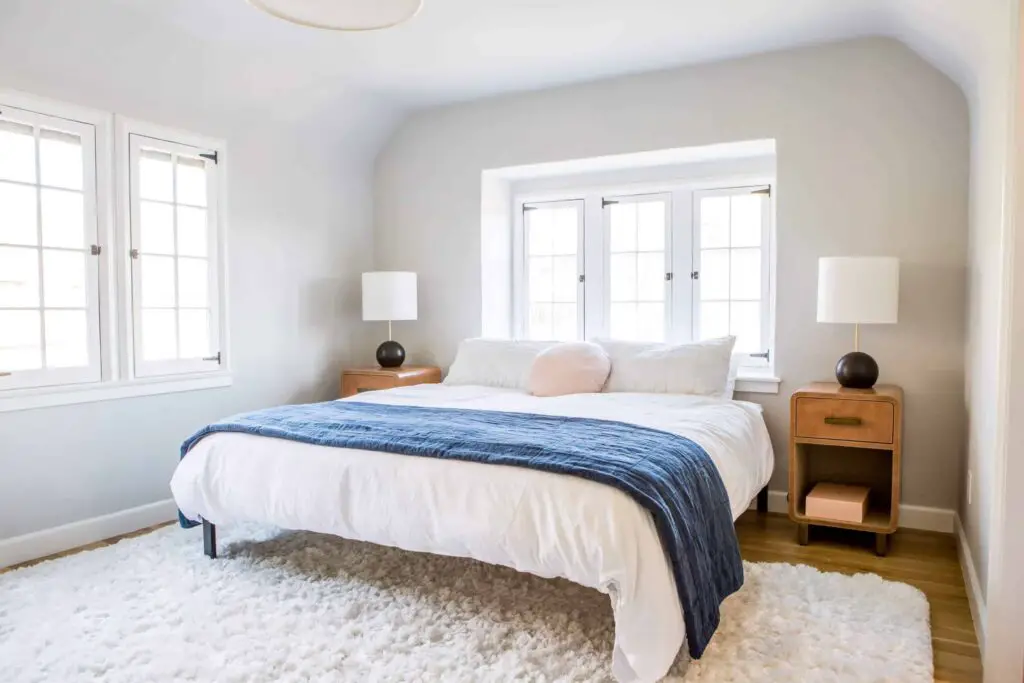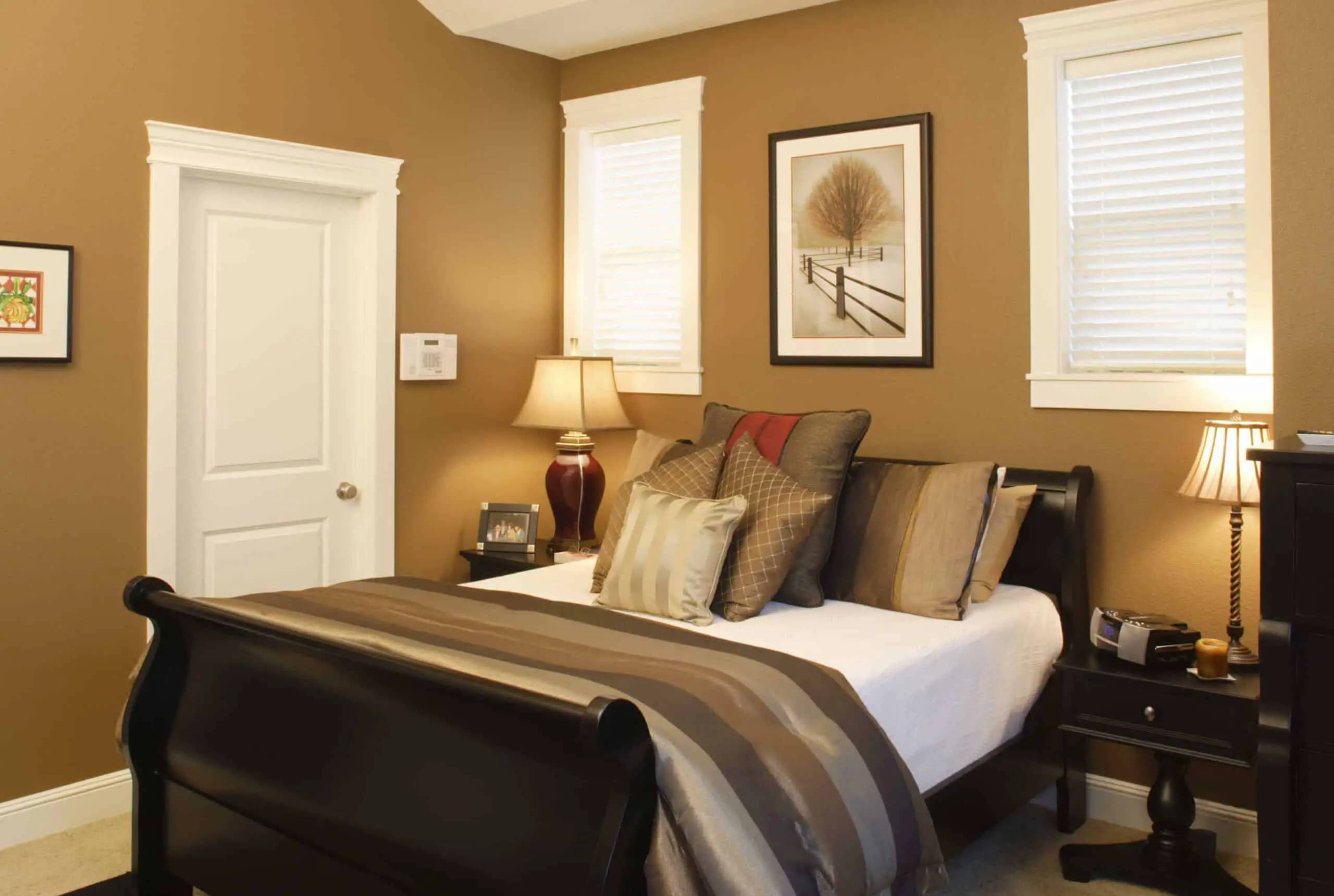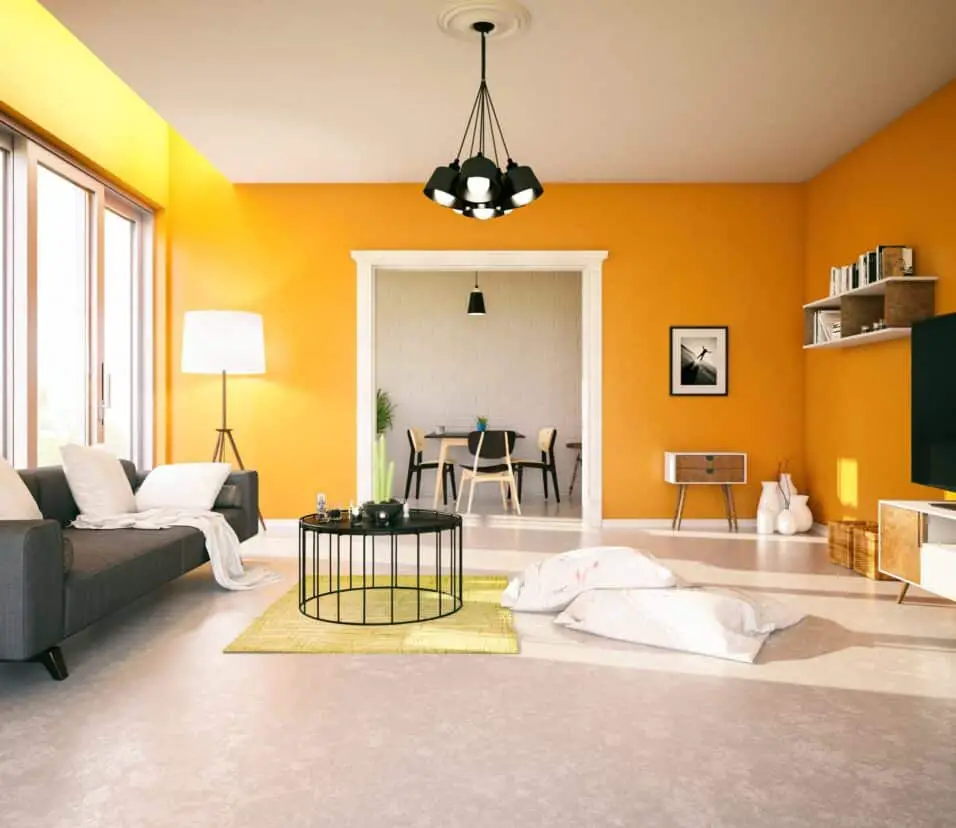Can You Paint Interior Walls In The Winter
Introduction
Can You Paint Interior Walls In The Winter: Embracing a home improvement project during the winter months? Wondering if painting interior walls is feasible amidst the cold? In this guide, we unravel the mysteries of painting during winter, exploring the challenges, considerations, and expert tips to achieve a successful and hassle-free indoor painting experience even when the temperatures drop. As winter blankets the landscape, the idea of refreshing your living spaces with a new coat of paint might seem counterintuitive. Yet, with the right approach, painting interior walls during the colder months is indeed possible. While winter presents its own set of challenges, such as lower temperatures and higher humidity, it also offers unique advantages, like quicker drying times due to the drier air.
While conventional wisdom might suggest that painting is reserved for warmer seasons, modern advancements in paint formulas and techniques have made winter painting a viable option. In the following exploration, we unravel the intricacies of painting interior walls during winter, addressing concerns about ventilation, paint selection for optimal performance, and the art of maintaining a comfortable environment for both you and your project. Step into a world of possibilities as we challenge the notion that winter is a season unfit for indoor painting.
Beyond the frosty landscapes and cozy interiors lies an opportunity to breathe new life into your living spaces. The question of whether you can paint interior walls in the winter is met with a resounding ‘yes,’ accompanied by a series of considerations to ensure success. In this comprehensive guide, we navigate the realm of winter painting, from tackling issues related to temperature and humidity fluctuations to unveiling the secrets of choosing the right paint and perfecting your technique. Embrace the transformative power of paint, even in the coldest of seasons.

What temperature is too cold to paint indoors?
Each paint formula is different, but as a general rule, for most oil-based paints, the ideal temperature to apply should be between 40 and 90 degrees Fahrenheit. For latex-based paints, it’s 50 to 85 degrees, although some more innovative paints are formulated to dry at lower temperatures, even as low as 35°F.
Painting indoors provides a controlled environment compared to outdoor projects, but temperature still plays a critical role in achieving a successful and durable finish. The temperature at which it becomes too cold to paint indoors depends on several factors, including the type of paint being used, the ventilation available, and the specific conditions of the space being painted.
Generally, most water-based latex paints, which are commonly used for interior projects due to their low odor and ease of cleanup, have a minimum recommended application temperature of around 50°F (10°C). Below this temperature, these paints can experience issues such as slow drying, poor adhesion, and uneven finish. In extreme cases, the paint might not dry at all.
Leading to a sticky or tacky surface.
Oil-based paints, which are less commonly used indoors due to their stronger odors and longer drying times, can be applied at slightly lower temperatures, around 40°F (4.4°C). However, similar issues can arise if the temperature drops too much below these thresholds.
It’s important to note that the ambient temperature is not the only factor to consider. The surface temperature of the walls or other surfaces being painted is equally important. Cold surfaces can cause moisture in the air to condense on the surface, leading to adhesion problems and watermarks in the paint.
Proper ventilation is another crucial aspect of indoor painting, especially during colder temperatures. Adequate ventilation helps the paint dry properly and prevents the buildup of fumes. If you’re painting in a space with poor ventilation, it’s best to wait for milder temperatures or consider using a paint with low volatile organic compounds (VOCs) to minimize indoor air pollution.
Is it safe to paint inside a house in the winter?
Be sure to maintain the temperature in the room so the paint has the best opportunity to dry evenly. So the answer is yes. Whether you are a do-it-yourself type or a hire a pro type, painting indoors in the winter is safe.
Ventilation: One of the main concerns when painting indoors during winter is ventilation. Proper ventilation helps to dissipate paint fumes and allows the paint to dry effectively. However, in cold weather, it might be less practical to keep windows and doors wide open for extended periods. This can lead to a buildup of paint fumes and poor air quality. To address this, ensure that the room you’re painting in is well-ventilated and consider using fans or air purifiers to help circulate air.
Paint Formulation: Different paint formulations have varying tolerances to temperature. Water-based latex paints, which are commonly used indoors, typically have a minimum application temperature of around 50°F (10°C). Using paint outside its recommended temperature range can result in poor adhesion, slow drying, and an uneven finish. Oil-based paints can tolerate slightly colder temperatures, but it’s still important to stay within their recommended range.
Drying Time: Cold and humid conditions can prolong the drying time of paint. If the paint doesn’t dry properly, it can result in smudges, smears, or even damage if objects come into contact with the wet surface. Ensuring proper drying time is crucial for achieving a professional-looking finish.
Surface Preparation: Cold temperatures can also affect the preparation of surfaces before painting. If surfaces are too cold, the paint might not adhere well, leading to peeling or flaking over time. Additionally, moisture can become trapped beneath the paint, causing issues like bubbling or mold growth. It’s important to address any moisture or temperature-related issues before painting.
Can I paint walls in cold weather?
Most paint brands have labels that warn users not to paint in temperatures below 35 degrees Fahrenheit. Thanks to modern advancements in paint materials, most paint manufacturers now offer acrylic latex paints that can be applied to the exterior of your home in temperatures as low as the threshold of 35 degrees.
Paint Type: The type of paint you choose plays a significant role in determining whether you can paint walls in cold weather. Water-based latex paints, which are commonly used for interior projects, have a minimum recommended application temperature of around 50°F (10°C). Oil-based paints can tolerate slightly lower temperatures, but it’s still important to adhere to their recommended temperature range.
Surface Preparation: Properly preparing the walls before painting is crucial in any weather, but it becomes even more important in cold conditions. Ensure that the surface is clean, dry, and free from any contaminants that could affect adhesion. Repair any cracks or imperfections before applying paint.
Temperature Considerations: Cold temperatures can significantly impact the paint’s ability to dry properly. If the temperature drops too low, the paint might take much longer to dry, leading to issues like smudging or poor adhesion. Try to maintain a consistent temperature in the room where you’re painting. Using space heaters or other forms of heating can help achieve this, but make sure not to overheat the room, as extreme temperature changes can also affect the paint.
Drying Time: Cold weather can extend the drying time of paint. Be patient and allow ample time for each coat of paint to dry before applying the next one. Rushing through the process can lead to subpar results.
When should you not paint inside?
Interior painting can be performed any day of the year, no matter the weather, unless your interior humidity is too great. In this case, turning on the air conditioning or a dehumidifier can make your home interior paint-worthy, even on the rainiest days.
Extreme Humidity: Excessive humidity can interfere with the paint’s drying process and adhesion. High moisture levels can lead to paint bubbling, cracking, or not adhering properly to surfaces. If the humidity is consistently high, it’s best to wait for more favorable conditions.
Active Mold or Mildew: Painting over surfaces with active mold or mildew growth is not advisable. The paint will not effectively seal the problem, and it can continue to grow beneath the new paint layer. Properly addressing mold or mildew issues before painting is essential.
Wet or Damp Surfaces: Painting on wet or damp surfaces can lead to poor adhesion and paint failure. It’s crucial to ensure that surfaces are completely dry before applying paint. This is especially relevant in areas like bathrooms, kitchens, or basements where moisture is common.
Poor Ventilation: Inadequate ventilation can result in prolonged exposure to paint fumes and poor air quality. Without proper air circulation, fumes can linger and cause discomfort or health issues. If you can’t provide adequate ventilation, it’s best to delay painting until better airflow can be arranged.
Unstable Temperature Fluctuations: Rapid and extreme temperature changes can affect paint application and drying. It’s important to maintain a consistent temperature while painting and during the drying process. Drastic fluctuations can lead to issues like cracking or peeling.
Is it bad to paint in a cold room?
Low temperatures affect both the application and drying of paint. Alkyd and oil paints, based on natural oils and resins, become more viscous in lower temperatures and require thinners to be added. Some paints are, however, manufactured with special additives to overcome this problem and improve their performance.
Slow Drying Time: Cold temperatures can drastically slow down the drying time of paint. This extended drying period can lead to various problems, such as dust and debris sticking to the wet paint surface, resulting in a rough and uneven finish.
Poor Adhesion: Paint that dries slowly due to cold conditions might not adhere properly to the surface. This can lead to issues like peeling, cracking, or chipping over time. Proper adhesion is crucial for a paint job that withstands wear and tear.
Uneven Finish: When paint takes a long time to dry, it can settle unevenly on the surface, resulting in an inconsistent finish. This can be especially noticeable with glossy or semi-gloss paints, where imperfections are more pronounced.
Blistering: Cold conditions can trap moisture between the paint layers or between the paint and the surface. As the paint dries and expands, this trapped moisture can cause blistering, resulting in unsightly bumps on the surface.
Why shouldn’t you paint in the winter?
Paint needs several days to cure, and as the temperature dips, dew can form on surfaces and cause the water in the paint to evaporate too slowly. That affects how the paint holds up over time, including how well it resists cracking. Colder temperatures and moisture on the surface can also result in staining or mildew.
Temperature and Humidity: Cold temperatures and higher humidity levels during the winter can significantly impact the performance of paint. Paint needs the right temperature range to dry properly and adhere effectively to surfaces. In cold weather, paint takes longer to dry, which can lead to issues like poor adhesion, uneven finish, and increased susceptibility to damage during the curing process.
Slow Drying Time: The extended drying time in cold conditions increases the risk of dust and debris settling onto the wet paint surface. This can result in a rough and gritty finish that requires additional time and effort to rectify.
Poor Adhesion: Cold temperatures can hinder the paint’s ability to bond properly with the surface. As a result, the paint might not adhere well, leading to peeling, cracking, or chipping over time. Proper adhesion is crucial for the longevity of your paint job.
Moisture Trapping: Painting in cold, damp conditions can trap moisture between the layers of paint or between the paint and the surface. As the paint cures and expands, this trapped moisture can cause blistering, bubbling, or other irregularities on the painted surface.
Should you not paint in the winter?
Ideally paint should be applied in temperatures above 60 degrees. Painting at temperatures below that, and especially below 50 degrees, can result in adherence problems and longer drying times, which means a longer wait to set the room back up again.
Temperature: Cold temperatures can significantly affect the drying and curing process of paint. Most paints have recommended temperature ranges for optimal adhesion and drying. Painting in temperatures below these ranges can lead to paint taking much longer to dry or not drying properly at all, resulting in a compromised finish.
Slow Drying Time: Cold weather slows down the drying time of paint, leaving it vulnerable to dust, debris, and even insects that can land on the wet surface. This can result in a textured and uneven finish that requires additional work to rectify.
Adhesion Issues: Paint applied in cold temperatures might not adhere properly to surfaces. Poor adhesion can lead to peeling, cracking, or chipping over time, jeopardizing the longevity of your paint job.
Moisture Trapping: Cold and damp conditions can cause moisture to become trapped beneath the paint layers or between the paint and the surface. This can result in blistering, bubbling, or other irregularities that compromise the appearance of the painted surface.
What happens if you paint in the winter?
Cold weather slows the drying time of both alkyd/oil- and water-based paints. For example, at an ideal temperature of 75 degrees, you can usually recoat after four hours.
Slow Drying: Cold temperatures hinder the drying process of paint. Paint takes longer to dry in cold conditions, which can lead to extended project timelines. Slow drying increases the risk of dust, dirt, and debris settling on the wet paint surface, resulting in an uneven and gritty finish.
Poor Adhesion: Cold weather affects the paint’s ability to bond properly with the surface. Paint applied in colder temperatures might not adhere well, leading to issues such as peeling, cracking, or chipping over time. Proper adhesion is crucial for a long-lasting paint job.
Blistering and Bubbling: Moisture can become trapped between layers of paint or between the paint and the surface in cold and damp conditions. As the paint dries and expands, this trapped moisture can cause blistering or bubbling on the painted surface, leading to an unsightly appearance.
Uneven Finish: Cold weather can cause paint to dry unevenly, resulting in variations in color, sheen, and texture across the painted surface. Achieving a smooth and consistent finish becomes challenging.
Longer Project Time: Due to extended drying times, you might need to wait longer between coats of paint to ensure each layer dries properly. This can extend the overall duration of your painting project.

Conclusion
The colder and more humid conditions of winter can significantly impact the paint’s drying time and overall finish quality. However, with proper planning and preparation, including selecting the right type of paint, using appropriate equipment, and ensuring adequate ventilation, successful interior painting in winter is achievable. Homeowners and DIY enthusiasts should exercise caution, adhere to manufacturer guidelines, and be patient throughout the process. If feasible, waiting for milder weather might be a more optimal choice to achieve the best results. Ultimately, a well-informed and thoughtful approach to winter interior painting can lead to a beautifully painted space that withstands the test of time.
While it might be tempting to rush through the project, exercising patience is crucial. Allowing sufficient drying time between coats and maintaining proper ventilation will contribute to a successful winter painting winter endeavor. Homeowners should also take advantage of natural light during the shorter days of winter to accurately assess the paint’s appearance and address any touch-ups before the final outcome sets. In summary, painting interior walls during the winter is indeed feasible, but it demands meticulous planning, suitable materials, and a keen awareness of the environmental factors at play. By understanding the challenges and implementing the necessary precautions, individuals can achieve a professional-looking finish that enhances the aesthetics of their living spaces. Whether choosing to tackle the project during winter or wait for more favorable conditions, a thoughtful and informed approach will undoubtedly yield the best results.








